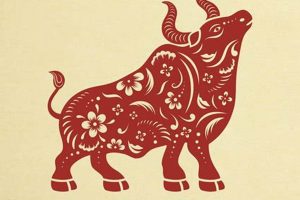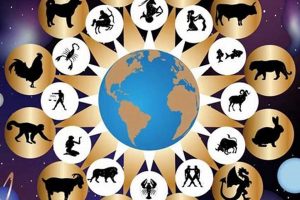The analysis of interpersonal harmony based on the Chinese zodiac signs seeks to determine the potential for positive relationships, whether romantic, familial, or platonic. For example, individuals born in the year of the Rat might be deemed highly compatible with those born in the year of the Ox or Dragon, while less so with those born in the year of the Horse. Beyond the twelve animal signs, this system also incorporates element theory (Wood, Fire, Earth, Metal, and Water) and other factors like Yin and Yang energies to provide a nuanced perspective.
This practice has a long history interwoven with Chinese culture, serving as a guide for navigating social dynamics and making informed decisions about relationships. Understanding the potential dynamics between different signs can offer insights into communication styles, shared values, and potential areas of conflict, contributing to stronger and more harmonious connections. Historically, such knowledge was considered valuable for marital matches, business partnerships, and even political alliances.
Further exploration of this intricate system reveals deeper layers of interpretation, encompassing the impact of birth charts, elemental interactions, and the significance of individual animal characteristics. This understanding provides a framework for appreciating the complexities of human interaction within the context of Chinese astrological principles.
Harmonious connections are often cultivated through understanding and awareness. These insights offer guidance for building stronger relationships based on astrological principles.
Tip 1: Understand Individual Charts: Compatibility assessments should extend beyond basic animal sign comparisons. Full birth chart analysis, incorporating elements and other astrological influences, offers a deeper understanding of individual characteristics and potential relationship dynamics.
Tip 2: Recognize Elemental Interactions: Consider the interplay of elements. For example, Wood feeds Fire, suggesting a supportive dynamic, while Water extinguishes Fire, indicating potential conflict. Understanding these interactions can illuminate areas of strength and potential challenges.
Tip 3: Don’t Rely Solely on Astrology: Astrological compatibility serves as a guide, not a definitive prediction. Open communication, mutual respect, and shared values remain crucial for successful relationships, regardless of astrological indicators.
Tip 4: Embrace Differences: Even seemingly incompatible pairings can thrive by appreciating and learning from their differences. Recognizing contrasting strengths and weaknesses can lead to complementary dynamics and mutual growth.
Tip 5: Consult with Experts: For a comprehensive understanding of individual and relationship dynamics, consider consulting with a qualified practitioner of Chinese astrology. They can provide personalized insights based on detailed chart analysis.
Tip 6: Focus on Growth and Harmony: Use astrological knowledge as a tool for self-awareness and relationship development. By understanding potential challenges, individuals can proactively address them and foster stronger, more harmonious connections.
By incorporating these insights, individuals can navigate interpersonal relationships with greater awareness, fostering understanding, and building stronger, more fulfilling connections.
A deeper understanding of these principles empowers individuals to approach relationships with greater insight, promoting harmonious connections and personal growth.
1. Animal Sign Interactions
Animal sign interactions form a cornerstone of Chinese astrological compatibility analysis. These interactions, based on the traditional cycle of twelve animals (Rat, Ox, Tiger, Rabbit, Dragon, Snake, Horse, Goat, Monkey, Rooster, Dog, and Pig), are believed to influence the dynamics between individuals. Compatibility assessments consider inherent compatibility or incompatibility between specific animal pairings. For instance, the Rat and Ox are generally considered a harmonious match, their characteristics complementing each other, while the Rat and Horse are often seen as a less compatible pairing due to potentially clashing personalities. These interactions are not viewed as deterministic but rather as indicators of potential strengths and challenges within a relationship.
The significance of animal sign interactions stems from their influence on various aspects of interpersonal dynamics. They offer insights into communication styles, shared values, and potential areas of conflict. Understanding these interactions provides a framework for navigating relationships more effectively. For example, awareness of potential communication challenges between a Tiger and a Monkey might encourage proactive measures to mitigate misunderstandings. Similarly, recognizing the shared values between a Dog and a Rabbit could strengthen their bond. Practical application of this knowledge contributes to building stronger and more harmonious connections.
In summary, animal sign interactions play a pivotal role in Chinese astrological compatibility. While not the sole determinant of relationship success, they offer valuable insights into potential dynamics. Understanding these interactions empowers individuals to navigate relationships with greater awareness, fostering understanding and mitigating potential challenges. This understanding, combined with consideration of other astrological factors, provides a comprehensive framework for analyzing interpersonal harmony.
2. Elemental Influences
Elemental influences play a crucial role in Chinese astrological compatibility, adding another layer of complexity beyond animal sign interactions. The five elementsWood, Fire, Earth, Metal, and Waterare believed to interact in specific cycles of creation and destruction, influencing individual personalities and relationship dynamics. These interactions are considered fundamental to understanding compatibility. For example, Wood feeds Fire, suggesting a nurturing dynamic, while Fire melts Metal, potentially indicating conflict or suppression.
Each individual is associated with a primary element based on their birth year. This element interacts with the elements of others, creating unique dynamics within relationships. Consider a Wood person and a Water person: Wood absorbs Water, potentially suggesting an imbalance where the Wood individual may drain the Water individual’s energy. Conversely, a Metal person and a Water person could experience a more harmonious interaction, as Metal generates Water, implying a supportive and nourishing relationship. Real-life examples abound, demonstrating how elemental compatibility can manifest in observable personality traits and relationship patterns. These observations underscore the importance of elemental influences as a component of compatibility analysis.
Understanding these elemental interactions offers practical significance in navigating relationships. By recognizing potential areas of harmony or conflict based on elemental influences, individuals can approach interactions with greater awareness. This understanding facilitates proactive communication and conflict resolution. Moreover, it provides insights into potential power dynamics within relationships, enabling individuals to adjust their interactions accordingly. While elemental influences are not the sole determinant of compatibility, they contribute significantly to a comprehensive analysis, offering valuable guidance for fostering harmonious connections.
3. Yin and Yang Balance
Yin and Yang, fundamental concepts in Chinese philosophy, represent complementary opposites that interact to form a dynamic whole. This principle of balance extends to Chinese astrology, where the interplay of Yin and Yang energies influences compatibility. Understanding this interplay provides crucial insights into relationship dynamics.
- Individual Yin and Yang Natures
Each individual possesses a dominant Yin or Yang energy based on their birth chart. Yin qualities are often associated with passivity, introspection, and coolness, while Yang qualities are linked to activity, extroversion, and warmth. For example, someone born under a predominantly Yin sign, such as the Rabbit, might exhibit a more reserved demeanor, while someone born under a Yang sign, like the Dragon, might be more assertive. These inherent energies influence individual preferences and interaction styles.
- Interaction Dynamics in Relationships
The interaction of Yin and Yang energies between individuals significantly impacts relationship dynamics. A relationship between two strongly Yang individuals might be dynamic and energetic but also prone to clashes. Conversely, a relationship between two Yin individuals might be peaceful and harmonious but potentially lacking in initiative. A balance of Yin and Yang, such as a Yang individual paired with a Yin individual, is often considered ideal, promoting complementary strengths and a harmonious flow of energy.
- Balancing Energies for Harmony
Chinese astrology suggests that balanced Yin and Yang energies contribute to relationship harmony. When energies are imbalanced, it can lead to tension and conflict. For instance, if a strongly Yang individual consistently dominates a Yin individual, it can create resentment and instability. Achieving balance involves recognizing and respecting each other’s energies, allowing for both expression and receptivity. This mutual understanding fosters a more harmonious and sustainable connection.
- Practical Applications in Compatibility Analysis
Consideration of Yin and Yang balance enhances compatibility analysis by providing insights beyond basic animal sign compatibility. For example, even if two individuals share compatible animal signs, an imbalance in their Yin and Yang energies could create underlying tensions. Incorporating Yin and Yang analysis allows for a more nuanced understanding of potential relationship dynamics, helping individuals navigate challenges and cultivate greater harmony.
In conclusion, Yin and Yang balance is integral to understanding Chinese astrological compatibility. By considering individual Yin and Yang natures and their interactions, individuals can gain valuable insights into relationship dynamics, fostering balance, harmony, and stronger connections. This understanding adds a layer of depth to compatibility analysis, allowing for a more comprehensive and insightful assessment of relationship potential.
4. Birth Chart Analysis
Birth chart analysis forms a cornerstone of comprehensive Chinese astrological compatibility assessments. While simplified compatibility analyses often focus solely on animal signs, a deeper understanding requires examining individual birth charts, also known as “Bazi.” These charts provide a detailed snapshot of an individual’s energetic makeup at the time of birth, incorporating not only the animal sign but also the elements, stems, and branches associated with the specific year, month, day, and hour of birth. This detailed information provides a more nuanced understanding of individual characteristics and potential relationship dynamics, moving beyond generalized animal sign compatibility.
The importance of birth chart analysis stems from its ability to reveal the complex interplay of various astrological influences. For example, two individuals might share the same animal sign, suggesting basic compatibility. However, differences in their birth charts, specifically the elements and stems, could reveal underlying energetic clashes or harmonies not apparent through a simplified animal sign comparison. A birth chart analysis might show one individual has a strong Fire element while the other has a strong Water element, potentially leading to a challenging dynamic. Alternatively, complementary elements, like Wood and Water, could indicate a supportive relationship. These nuanced insights are crucial for understanding the true potential of a relationship.
Practical applications of birth chart analysis within compatibility assessments are numerous. Relationship potential can be evaluated with greater accuracy, considering the unique energetic profiles of each individual. Birth chart analysis also aids in understanding potential challenges and strengths within a relationship, allowing individuals to navigate interactions more effectively. For instance, if a couple’s birth charts reveal potential communication difficulties, they can proactively address these issues through conscious communication and understanding. Furthermore, birth chart analysis can provide personalized recommendations for strengthening relationships, based on the specific energetic needs of each individual. This personalized approach contributes to building stronger and more harmonious connections. In conclusion, birth chart analysis is essential for a thorough understanding of Chinese astrological compatibility. It offers a deeper level of insight into individual characteristics and relationship dynamics, moving beyond superficial compatibility assessments and providing valuable guidance for navigating interpersonal connections effectively. This nuanced understanding empowers individuals to build stronger, more fulfilling relationships based on a comprehensive understanding of their energetic interplay.
5. Relationship Dynamics
Relationship dynamics, the patterns of interaction and behavior between individuals, are significantly influenced by Chinese astrological compatibility. Compatibility analysis provides insights into potential strengths, challenges, and overall harmony within various relationship types, including romantic partnerships, family connections, and friendships. Understanding these dynamics offers valuable guidance for navigating interpersonal interactions and building stronger connections.
- Communication Styles
Astrological compatibility can illuminate communication patterns within relationships. For example, a pairing between a direct and assertive Tiger and a more diplomatic and tactful Rabbit might require conscious effort to navigate communication differences. The Tiger’s bluntness could inadvertently offend the Rabbit’s sensitivity, while the Rabbit’s indirectness might frustrate the Tiger’s desire for clear communication. Recognizing these potential challenges through compatibility analysis empowers individuals to adapt their communication styles and foster mutual understanding.
- Conflict Resolution
Compatibility assessments offer insights into potential conflict areas. Certain astrological combinations might be prone to power struggles or disagreements due to conflicting personality traits or elemental clashes. For instance, a Fire sign paired with a Water sign might experience frequent clashes due to their opposing natures. Fire’s intensity could overwhelm Water’s fluidity, leading to tension. Understanding these potential friction points allows individuals to approach disagreements with greater awareness and develop effective conflict resolution strategies.
- Shared Values and Goals
Astrological compatibility can reveal shared values and goals, contributing to relationship cohesion. Individuals with compatible signs and elements might naturally align in their life aspirations and core beliefs, fostering a sense of mutual understanding and support. For example, two Earth signs might share a grounded approach to life, valuing stability and practicality, while two Fire signs might share a passion for adventure and exploration. This alignment of values strengthens the foundation of the relationship.
- Emotional Expression and Support
Compatibility analysis sheds light on how individuals express and receive emotional support. Certain astrological combinations might demonstrate a natural ability to empathize and provide emotional support, while others might struggle with emotional vulnerability. For example, a Water sign, known for its emotional depth, might offer unwavering support to a partner, while an Air sign might demonstrate support through intellectual understanding and practical solutions. Recognizing these differences facilitates effective communication and strengthens emotional bonds.
By understanding how Chinese astrological compatibility influences these facets of relationship dynamics, individuals gain valuable tools for building stronger, more fulfilling connections. Compatibility assessments offer guidance for navigating communication styles, resolving conflicts effectively, recognizing shared values, and providing meaningful emotional support. This understanding fosters greater self-awareness within relationships, empowering individuals to cultivate harmony and navigate interpersonal dynamics with greater insight.
Frequently Asked Questions about Chinese Astrological Compatibility
This section addresses common inquiries regarding the complexities of Chinese astrological compatibility, offering clarity and dispelling misconceptions.
Question 1: Is Chinese astrological compatibility solely determined by animal signs?
No. While animal signs provide a foundational understanding, compatibility assessments also consider element interactions, Yin and Yang balance, and individual birth charts for a more comprehensive analysis.
Question 2: Can incompatible animal signs have a successful relationship?
Yes. Astrological compatibility serves as a guide, not a definitive prediction. Successful relationships depend on mutual respect, communication, and shared values, regardless of astrological indicators. Understanding potential challenges highlighted by astrological incompatibility allows individuals to address these proactively.
Question 3: How do elemental interactions influence compatibility?
Elements interact in cycles of creation and destruction. Harmonious elemental combinations, such as Wood nourishing Fire, suggest supportive dynamics. Conflicting combinations, such as Fire melting Metal, might indicate potential challenges. These interactions add depth to compatibility analysis.
Question 4: What is the significance of Yin and Yang in compatibility?
Yin and Yang represent complementary opposites. A balance of Yin and Yang energies within a relationship is often considered ideal, promoting harmony. Imbalances can lead to tension, but understanding these dynamics allows for proactive adjustments.
Question 5: Why is birth chart analysis important for compatibility?
Birth charts provide personalized insights beyond generalized animal sign compatibility. They reveal the unique energetic makeup of each individual, allowing for a more nuanced understanding of potential relationship dynamics and personalized guidance.
Question 6: How can this knowledge be applied practically?
Understanding compatibility can improve communication, conflict resolution, and mutual understanding within relationships. This knowledge empowers individuals to navigate challenges proactively and cultivate stronger connections.
A comprehensive understanding of Chinese astrological compatibility involves considering various factors beyond animal signs. This knowledge offers valuable insights into relationship dynamics, empowering individuals to navigate interpersonal connections with greater awareness and foster more harmonious relationships.
Further exploration of specific relationship types, such as romantic partnerships or family dynamics, provides additional insights for applying these principles practically.
Conclusion
Chinese astrological compatibility offers a nuanced framework for understanding interpersonal dynamics. Exploration of this system reveals the interplay of animal sign interactions, elemental influences, Yin and Yang balance, and the importance of individual birth chart analysis. These factors contribute to a comprehensive understanding of potential strengths and challenges within relationships, extending beyond simplified compatibility assessments.
Navigating the complexities of human interaction benefits from the insights provided by this ancient system. While not deterministic, Chinese astrological compatibility offers a valuable tool for enhancing communication, fostering understanding, and building stronger, more harmonious connections. Continued exploration and application of these principles can contribute to a deeper appreciation of the multifaceted nature of human relationships and the potential for greater harmony within interpersonal dynamics.







